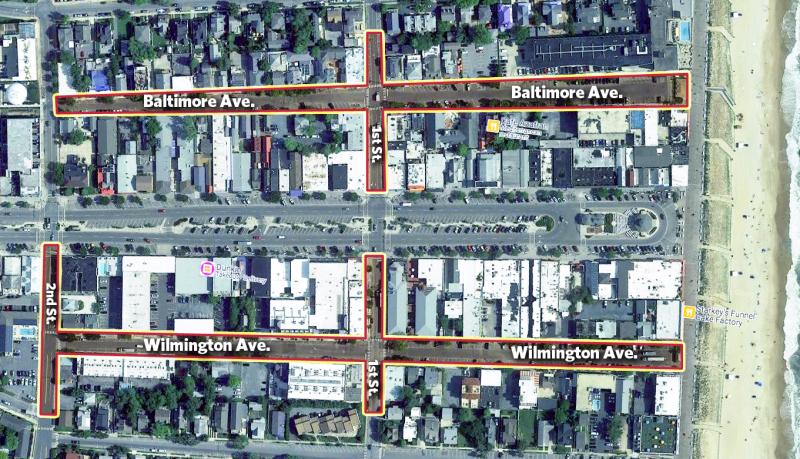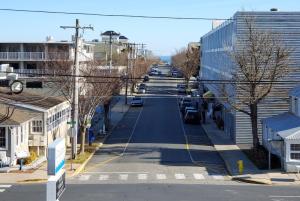Rehoboth streetscape project could cost $50 million
Rehoboth Beach commissioners got their first all-in cost estimate for a proposed streetscape project on Baltimore and Wilmington avenues, and if underground utilities are included, the price tag for the project could run $50 million and take years to complete.
In early 2021, city officials began exploring what it would take to do a streetscape project on the first and second blocks of Baltimore and Wilmington avenues, and portions of First and Second streets. Part of that exploration was the creation of a task force, which recommended, among other things, to underground utilities.
During a commissioner meeting Dec. 16, representatives from consultant JMT Engineering outlined a proposed construction timeline and estimated costs.
JMT engineer Jay Smith said the plan would be to begin with the ocean blocks of the two commercial streets. As proposed, the design for the ocean blocks would begin in 2023 and finish in 2024, with construction beginning in 2025 and ending in early 2027. As for the second blocks, Smith said, design would occur in 2025, with construction beginning in 2028 and ending in 2029.
Smith said the proposed timeline is contingent upon funding availability, a smooth right-of-way process and no permitting issues related to National Environmental Policy Act.
The restricted construction period would mirror the city’s moratorium on demolitions – May 15 to Sept 15. Smith said his company assumed each phase of the projects would be bid separately so each contractor could work on the projects separately.
Smith estimated the project to run about $43 million to a little above $50 million. It would depend on inflation, he said.
Angie Hernandez, a second consultant for JMT, reviewed outside funding sources. There doesn’t appear to be much available. She suggested the state’s Transportation Alternatives Program, but that has a $1 million cap and requires a 20% match from the city.
Hernandez said the city could also explore a Building Resilient Infrastructure and Communities grant from the federal government, but she wasn’t sure if the project would qualify.
For both the state and federal opportunities, it appears it’s too late for the 2023 application cycle – the deadline has passed for the state grant, while the deadline for the federal grant comes at the end of January.
Hernandez said there are Community Transportation Funds from local legislators, but each one only gets $350,000 and they’re typically for smaller projects, said Hernandez.
Interim City Manager Evan Miller said commissioners could explore the use of the city’s annual capital improvement budget. Right now, he said, the annual capital budget sits at about $6.4 million.
To dedicate a funding stream of millions of dollars from the capital budget to go toward underground utilities would require the city to significantly cut down the rest of the annual capital budget, said Miller.
City Finance Director Burt Dukes went into city finances further and didn’t mince words.
“This is a very heavy lift,” said Dukes. “It’s going to require a lot of our borrowing capacity, and it’s going to require more usage of our reserve cash than anything we’ve ever done.”
Dukes said the city has a loan capacity of $75 million, with roughly $15 million available before reaching that max. The city would have to go to referendum to increase that limit, he said.
The city would have to use 50% of its reserve funds from transfer, water and sewer taxes just to give a cushion for other things, said Dukes.
“I really think we’re going to need more grant support to minimize the risk the city would have. If you’re talking $50 million, internally, I think it’s difficult,” said Dukes.
Being a high-level review, discussion on the presentation by commissioners was limited, and Mayor Stan Mills said there will be time for more discussion in the future.
“This isn’t the end of it,” said Mills. “We will have further discussion on it. Now, we know what to focus on in the future.”
Chris Flood has been working for the Cape Gazette since early 2014. He currently covers Rehoboth Beach and Henlopen Acres, but has also covered Dewey Beach and the state government. He covers environmental stories, business stories and random stories on subjects he finds interesting, and he also writes a column called Choppin’ Wood that runs every other week. He’s a graduate of the University of Maine and the Landing School of Boat Building & Design.
























































